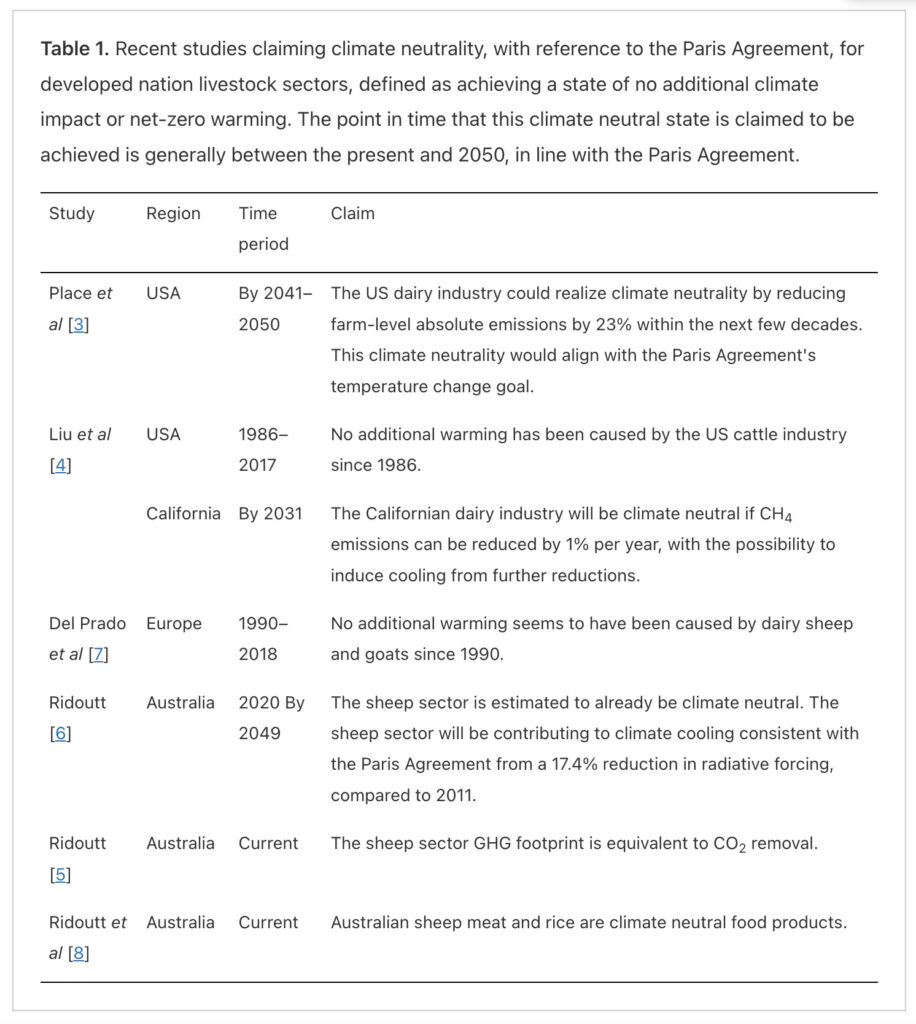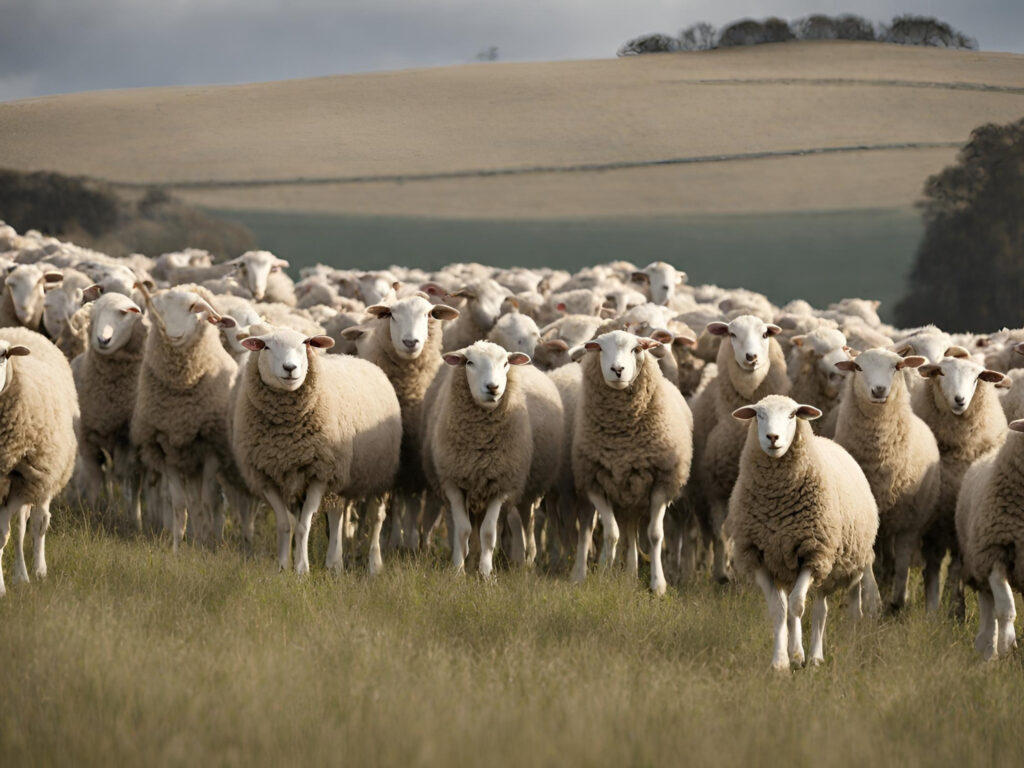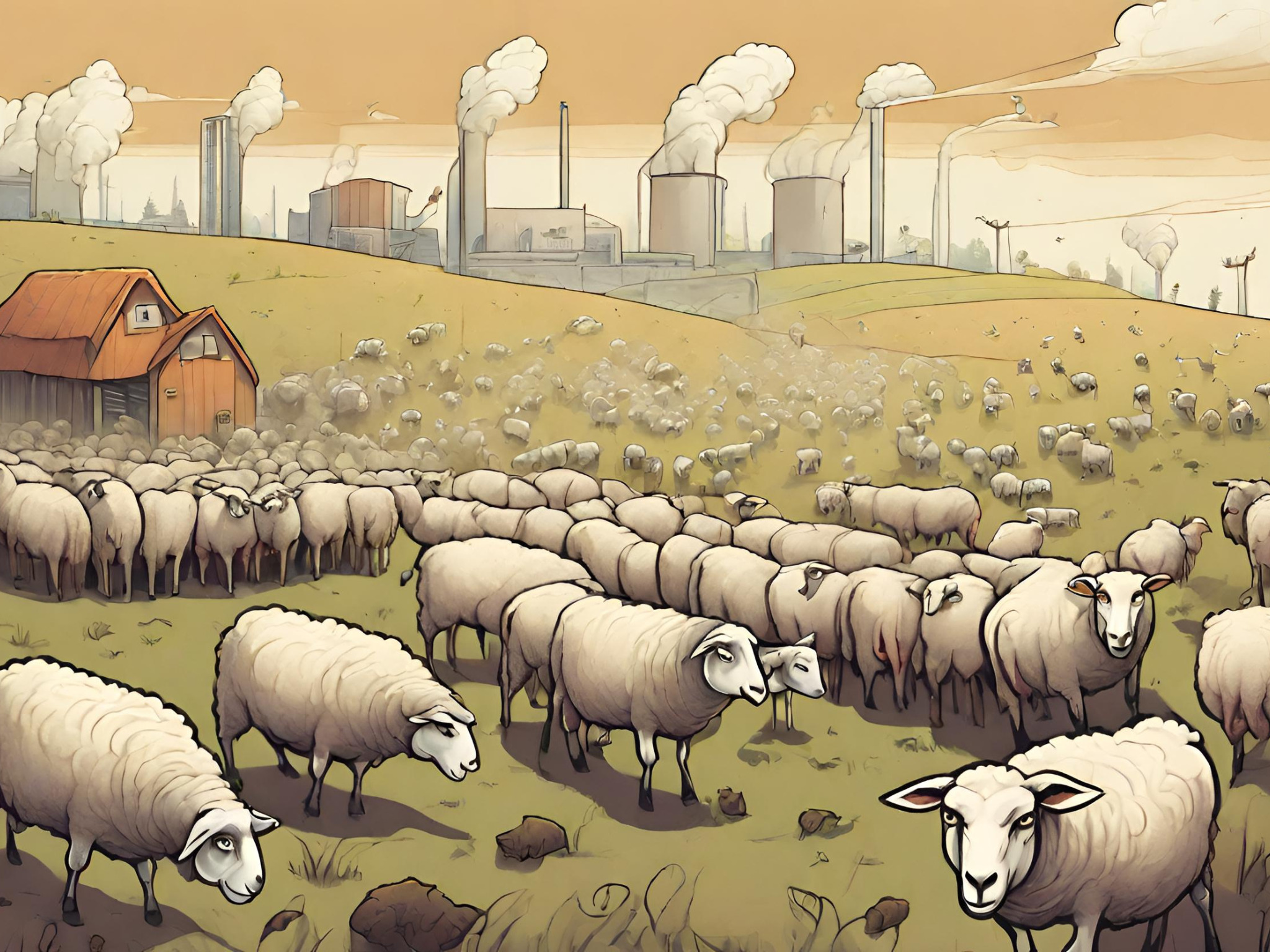Too Good to Be True: How the Livestock Sector is Misusing Climate Neutrality Claims
6 Mins Read
A host of studies suggesting positive outcomes for the livestock industry’s claims to climate neutrality are highly misleading, given they use a methane measurement tool that significantly undermines their emissions impact.
The US cattle industry hasn’t caused any additional warming since 1986, while dairy sheep and goats in Europe haven’t done so since 1990. California’s dairy sector, meanwhile, just needs methane emissions to be reduced by 1% every year to become climate-neutral by 2031. In Australia, sheep meat is already climate-neutral, and will continue to contribute to cooling as per the Paris Agreement.
These are the findings of peer-reviewed studies published within the last two years. They’re claims celebrated and recirculated by livestock industry organisations and publications, painted as a gotcha moment for the anti-meaters and alt-proteiners. Where are your superior climate credentials now, huh?
But a new study has called these statements highly misleading, as they make use of a controversial emissions measurement metric that changes how the true environmental impact of animal agriculture is looked at. For ages, governments and scientists have been using a metric called GWP100, which measures the global warming potential of greenhouse gas emissions over a 100-year period. Lately, though, some have presented an alternative, GWP*, which focuses on changes in the rate of emissions between two points in time (usually over a decadal timescale) rather than the absolute emissions.
This is because, as the proponents of GWP* argue, methane is a short-lived gas, with a lifespan of up to 12 years, compared to hundreds of years for carbon. So the suggestion is that it’s unfair to compare the two gases. The scientists who developed GWP* say it’s a more accurate way to measure the effect of methane (or CH4) on the planet, but the problem is that while methane has 80 times the impact of carbon dioxide over a 20-year period, it is still 28 times more potent over a 100-year timescale.
The new study, published in the Environmental Research Letters journal, shows that academic researchers have been using GWP* as a metric for the livestock industry’s climate impact, minimising their historical contribution by centring focus on current trends over total emissions.
Livestock-friendly research leverages GWP* loopholes

This creates two loopholes, according to climate policy researcher and political studies professor Ryan Katz-Rosene. “If your CH4 emissions trajectory over [20 years] is steady or even negative, you come out looking real good,” he told DeSmog. “But that completely erases the historical legacy of CH4 emissions growth before that (which is what occurred in most industrialized economies). GWP* essentially allows those industrialised economies to start with an unfair hand.
“The second loophole is of course the way it could disincentivise greater CH4 cuts. ‘We’re already climate compliant, why should we cut CH4 further?’”,” he added. And both these loopholes are being exploited, according to the study, which highlighted six journals that used GWP* to equate stabilised methane emissions to carbon neutrality, even if said emissions remain high.
For example, in 2021, one study showed the climate effects of sheep farming in Australia, finding that the industry’s emissions had stabilised in 2020 and that meant it wasn’t causing additional warming, making the country’s sheep industry “climate-neutral”. And yes, while there was no further heating on the part of the industry from 2019 to 2020, that doesn’t mean sheep production didn’t affect the climate anymore. Improving over your previous emissions doesn’t make you climate-neutral – there’s still a lot of methane in the air thanks to sheep.
Similarly, research in 2022 used GWP* to suggest that dairy cattle in the US can become carbon-neutral in under 20 years by reducing absolute emissions by 23% on farms and increasing milk productivity by 30% for each cow. But this is misleading, since overall warming from the dairy industry would only keep increasing in this time, and warming the planet much more than what it is today, despite being labelled as “climate neutral” as a result of GWP* calculations.
Frank Mitloehner, a co-author of this report who has been closely linked to the livestock sector, sidestepped the issue of these claims being misleading, but acknowledged that absolute emissions are important. He told DeSmog: “We will absolutely need to continue using GWP100 as it tells us things other metrics can’t, but we can do so in tandem with GWP* to get a more accurate picture of the impact methane emissions have on our climate.”
This is echoed by Myles Allen, an Oxford scientist who helped create GWP*. He explained that this kind of research is not how the metric was built to be used: “It was proposed as a way of using the information provided by GWP100 to work out warming impacts, and that remains what it is for. It’s a supplement, it’s additional information.”
He added: “If you’re trying to use [GWP*] to say what the responsibilities of a sector are, without consideration of anything else — like the history of a sector, the wealth of a sector, and the other impacts that sector might have had on the environment — then I think that’s inappropriate.”
Like a house on fire

“The climate neutrality cited in these reports is defined as having no additional warming over time,” added Michelle Cain, another Oxford scientist who developed GWP*. “For industries which have a large component of methane emissions, this is not the same as the industry not existing at all. Obviously, stopping the methane emissions entirely would lead to even lower temperatures than reducing the methane emissions by a fraction.”
Donnison added that climate neutral claims suggest a warming balance that doesn’t exist, with only continued, aggressive methane cuts offsetting the other emissions from livestock. Claiming to be “carbon neutral” when continued reduction is required indefinitely “is an oxymoron”. And since methane is a rapid driver of climate change – responsible for 30% of post-industrial temperature rises and about half a degree of warming – significant reductions arr necessary. Livestock itself accounts for a third of all methane emissions.
A report by the Changing Markets Foundation last month also outlined how the meat and dairy industry as well as governments are pushing to use GWP* as a methane measurement tool, which could let companies like Fonterra and Tyson claim climate neutrality. And trade groups and policymakers in New Zealand, Ireland, the US and the UK are keen on the metric and hoping to make it an international standard. The UN FAO, meanwhile, has already been under fire after an investigation revealed that it censored work on methane emissions reporting after pressure from the livestock lobby.
“If GWP* is accepted for corporate accounting of emissions, this could allow companies to greenwash small emissions reductions as a significant achievement,” she adds. “Consumers are already inundated with claims such as carbon-neutral milk, climate-friendly beef, etc.,” Nusa Urbancic, CEO of the Changing Markets Foundation, told Green Queen.
“If this metric gets traction in the corporate sector, I can imagine that these exaggerated claims will get an additional boost. They would then have to be judged by individual consumer authorities on their merits, so I think if any company is brave enough to make such a claim, it could result in some interesting legal cases.”
Donnison told DeSmog that the livestock industry’s claims of a climate-neutral future create a situation akin to a house on fire, where someone who’s pouring gas on the fire wants credit for pouring a little less. “You can say, ‘Well, I’m not going to add further to the fire anymore.’ But what about all the existing damage you’ve caused up until that point?”



